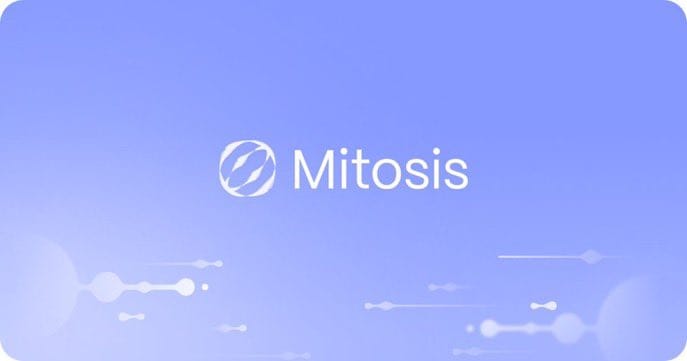Evaluating Crypto Liquidity: A Framework of Metrics and Market Narratives

In the fast-moving world of cryptocurrency, liquidity plays a critical role in shaping market stability, efficiency, and long-term growth. The 2025 report by The Block Research, Numbers and Narratives: An Evaluation Framework for Crypto Liquidity, offers a comprehensive guide to understanding the nuances of liquidity across digital asset markets. By combining hard data with market psychology, the framework provides valuable insight for projects, investors, and exchanges seeking to navigate the complexities of modern crypto trading.
This article explores the core components of the framework, including the quantitative metrics that define liquidity, the evolving role of market makers, and the influence of market narratives on trading behavior and asset flow.
What is Liquidity in Crypto Markets?
Liquidity refers to how easily an asset can be bought or sold without causing major changes to its price. In cryptocurrency markets, where volatility is a constant, liquidity becomes especially important. High liquidity means tighter bid-ask spreads, reduced slippage, and a more stable environment for both retail traders and institutional investors.
The Block Research report emphasizes that liquidity in crypto is influenced by factors such as trading volume, market depth, order book dynamics, and the presence of market makers. Crypto markets are global and run 24/7, with liquidity varying widely by asset, exchange, and region. While assets like Bitcoin (BTC) and Ethereum (ETH) typically benefit from high liquidity, even they can experience disruptions during periods of market stress or on certain less active platforms.
Quantitative Metrics That Define Liquidity
The report opens with a quantitative lens, analyzing liquidity’s role in shaping price stability and volatility. Key metrics include:
- Trading Volume: A high trading volume signals active participation and better liquidity, which reduces the potential for price manipulation.
- Bid-Ask Spread: Narrow spreads suggest healthy market activity and efficient price discovery.
- Market Depth: A well-layered order book with significant volume on both sides allows for large trades without excessive price movement.
- Slippage: Lower slippage indicates more efficient execution, which is typically found in highly liquid markets.
Liquidity also varies by region. North American and Asian exchanges often show higher liquidity for major tokens due to greater institutional activity. In contrast, smaller markets or those under regulatory strain tend to experience bottlenecks, resulting in higher volatility and less reliable pricing.
The Critical Role of Market Makers
Market makers are essential in maintaining liquidity. They provide continuous buy and sell quotes and help narrow spreads, contributing to a smoother trading experience. In crypto, where trading is fragmented across centralized and decentralized platforms, market makers are crucial for maintaining consistent liquidity.
However, not all market makers operate with transparency or integrity. Some overpromise on volume or price outcomes to win contracts, which can lead to unethical practices such as wash trading or artificial price inflation. These behaviors distort the market and erode trust.
How to Evaluate a Market Maker
The framework recommends several criteria for evaluating market makers:
- Track Record: Look for a history of effective liquidity provision across multiple assets and platforms.
- Performance: Reliable market makers can maintain deep order books and stable spreads even in volatile markets.
- Client Communication: Transparency and responsiveness are key for ongoing alignment.
- Technology: Advanced trading infrastructure and risk controls are essential for stable liquidity.
- Regulatory Awareness: Compliance with local and international laws helps reduce legal exposure for associated projects.
Projects that partner with reputable market makers tend to benefit from reduced volatility and deeper markets, making their tokens more appealing to investors.
Beyond the Numbers: The Impact of Narratives on Liquidity
In addition to metrics, the report examines how narratives shared beliefs or themes that gain momentum in the market—affect liquidity patterns. In crypto, narratives can rapidly shift sentiment and capital allocation, often independent of a project’s fundamentals.
For example, trends like decentralized finance (DeFi), meme coins, or tokenized real-world assets (RWAs) have each sparked waves of liquidity inflows. These movements are often driven by social media, influencers, and speculative fervor rather than technical merit or utility.
Narratives in Action
The report includes several case studies that illustrate how narratives shape liquidity:
- Meme Coin Popularity: In 2024, tokens like SPX6900 and Gigachad attracted significant liquidity thanks to viral social media campaigns, despite limited real-world utility.
- DeFi Growth: A lending protocol that combined strong narrative appeal with quality market-making achieved stable price performance and attracted institutional support.
- Regulatory Fallout: A privacy-focused token lost liquidity after being delisted from major exchanges, driven by regulatory concerns and negative media coverage.
These examples reveal that liquidity is not purely technical—it is also emotional and psychological. Projects with strong fundamentals but weak narratives may struggle to attract liquidity, while hype-fueled tokens may enjoy temporary inflows that quickly evaporate.
A Comprehensive Framework for Liquidity Evaluation
The Numbers and Narratives framework presents a structured approach to evaluating and managing liquidity in the crypto ecosystem. Its key pillars include:
- Quantitative Liquidity Assessment:
- Measure trading volume, spreads, market depth, and slippage.
- Monitor liquidity distribution across regions and asset types.
- Analyze how liquidity correlates with volatility and price performance.
- Market Maker Due Diligence:
- Evaluate potential partners based on performance, transparency, and technology.
- Create clear agreements that outline responsibilities and avoid manipulation.
- Narrative and Sentiment Analysis:
- Track prevailing market narratives and assess their impact on liquidity.
- Align storytelling with project fundamentals to attract sustainable interest.
- Proactively manage negative narratives through strategic communication.
- Liquidity Risk Management:
- Prepare for challenges such as regulatory shifts, exchange fragmentation, or unexpected volatility.
- Develop plans to preserve liquidity during market downturns.
Why This Framework Matters
This evaluation model has important implications for different stakeholders:
- For Projects: Prioritizing both liquidity infrastructure and storytelling can help improve token performance and ecosystem resilience.
- For Investors: A better understanding of liquidity dynamics and sentiment helps inform more strategic decision-making.
- For Exchanges: Applying this framework can improve platform stability, attract volume, and build user trust.
- For Regulators: The report highlights the importance of supporting transparent market activity without stifling innovation or enabling manipulation.
Challenges and Future Considerations
While the framework offers clear guidance, implementation is not without challenges. Crypto markets remain fragmented, regulatory landscapes are still evolving, and the fast pace of narrative shifts can outpace even the most diligent projects.
The report outlines several areas for further exploration:
- AI-Driven Analytics: Using machine learning to anticipate liquidity trends and optimize market-making strategies.
- Cross-Chain Liquidity Solutions: Facilitating seamless liquidity in multi-chain environments.
- Policy Alignment: Working with regulators to support healthy liquidity across jurisdictions.
- Narrative Resilience: Developing communications strategies that endure beyond bull cycles or hype phases.
Conclusion
Numbers and Narratives: An Evaluation Framework for Crypto Liquidity delivers a balanced, forward-thinking model for understanding one of the most critical dimensions of crypto markets. By combining quantitative analysis with narrative insight, the framework equips projects and investors to navigate a complex and often unpredictable landscape.
Liquidity, as the foundation of a functioning market, must be actively managed. With this framework, stakeholders can make more informed decisions, avoid common pitfalls, and contribute to a healthier, more transparent crypto ecosystem.
For access to the full report, visit The Block.
Learn With Mitosis








Comments ()